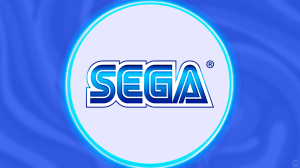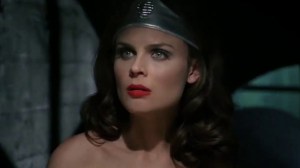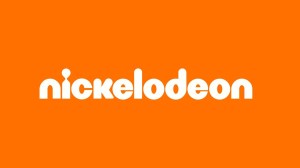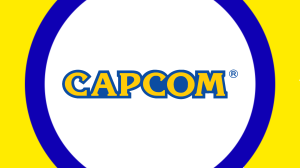Disney Lorcana provides players with a fun and fast-paced game experience that offers flexibility in multiple formats. The new trading card game by Ravensburger is perhaps the biggest trading card game release in over 20 years and is the biggest threat to the dual hegemony of Magic: The Gathering and the Pokemon Trading Card Game within the trading card game industry since those games were released in 1993 and 1996, respectively. While other card games have come and gone (and occasionally stuck around and built up their own moderately sized fan bases, like Flesh and Blood or One Piece or even the larger Yu-Gi-Oh card game), the strength of the Disney IP alone puts Disney Lorcana in a prime spot to turn the “Big Two” in trading card games into a “Big Three,” provided that the game itself is somewhat enjoyable to play.
Videos by ComicBook.com
Each game is a race to collect 20 Lore which players collect by having their summoned characters “quest” on a turn. Almost every character card has between 1-4 Lore symbols on them, and players collect those Lore automatically when a character quests, which also exerts them. To stymy an opponent’s chase for 20 Lore, players can challenge any exerted character, causing simultaneous damage to both the challenger and the challenged. However, only exerted characters can be challenged, so a player can attempt to protect a valuable character simply by opting for a character to do nothing on a turn. In addition to Character cards, there are also Item and Action cards. Item cards tend to stay in play, providing buffs or additional benefits, while Action cards have one-time effects that range from damaging an opponent’s characters to drawing additional cards.
One of the ways that Disney Lorcana is unique is how a player “pays” for a card. A player may move one card from their hand into the Inkwell on their turn, with the Inked cards becoming the currency that players use to put other cards into play. Like mana from Magic: The Gathering, exerted Ink cards reset at the beginning of every turn, but players cannot later play a card designated as Ink. This mechanic creates an additional choice on every turn, one not present in Magic: The Gathering (where Land cards can’t be used for any other purpose) or the Pokemon Trading Card Game (where Energy cards have a very set role in the game.) While sometime the choice of what card to Ink during a turn is obvious, there are times where a player may find themselves regretting send a card into the Inkwell later in the game.
Deckbuilding in Disney Lorcana is centered around six “ink” types, with decks limited to cards from two kinds of Inks. Each ink has its own themes and card archetypes to build around, which comes with pros and cons. Amber cards tend to focus on strength in numbers, with abilities that provide boosts or benefits to other cards. Steel cards have stout defense and can protect other cards in play. Sapphire cards seem to have a focus on providing passive buffs to other cards, while Ruby cards focus on attacking and stealing Lore from opponents. Amethyst cards usually have powerful magical abilities that can be triggered on every turn but leave them vulnerable, while Emerald cards come with flexibility in mind and aim to give players options on every turn. There are some obvious Ink pairings that make sense, but I appreciated that each Ink archetype seemed to be at least somewhat compatible with every other Ink.
Ravensburger wisely chose to make Disney Lorcana a bit more dynamic than the very stiff Pokemon Trading Card Game, but more streamlined than Magic: The Gathering, whose ruleset has become somewhat bloated over its 30-year-run. The game presents enough choices and strategies to satisfy an adult TCG veteran, but easy enough that an 8-year-old child can pick up the game and understand its core mechanics after a few rounds. At least with the First Chapter set that launches the game, players don’t have to worry about Conditions or a bevy of abilities that require memorization. While there are a few keyword abilities that have some resemblance to Magic: The Gathering’s evergreen keyword abilities (Evasive is a pretty clear parallel to Flying, for example), the cards explain what each Keyword ability does on the card. I also appreciated that the designers tried to give characters unique abilities that match their Disney movie story or character arc, showing that a lot of care and appreciation to the source material went into making the card. A mermaid version of Ariel has a powerful Singer ability that lets her play Song cards above her normal cost, while a legged version of Ariel is appropriately unable to Sing.
The artwork is also absolutely stunning – one of the big things that separate Pokemon and Magic from other trading card games is art quality, and Disney Lorcana’s art is definitely on par with those games. My wife, someone who very much does not understand the appeal of collecting cards, loved looking at every single card in the starter decks and wanted to know where she could see more. The game pulls from more than just expected movies as well, the First Chapter alone pulls from 101 Dalmatians, Emperor’s New Groove, Treasure Planet, and Sword in the Stone alongside expected hits like Cinderella, Little Mermaid, and Frozen.
Like every trading card game, Disney Lorcana’s biggest issues come with the randomness of card pulls and with the steady attrition of choices as a player puts more cards into play at a pace quicker than they can replenish their hand. While Disney Lorcana has a very generous mulligan rule in place, I quickly learned that a bad opening hand is disastrous for matches. This isn’t a problem unique to Disney Lorcana (the number of Pokemon card games I’ve played that was over before a single card was drawn is astounding) but I think that understanding what constitutes a good hand will be one of the biggest challenges for beginners. Likewise, the Starter Decks I was provided for review simply didn’t have enough cards that could replenish a hand. There were only a handful of playthroughs that didn’t end with either me or my opponent with only one or two cards in hand and little room to strategize. Again, neither of these issues are unique to Disney Lorcana but they are potential obstacles that players will notice as they start to play the game on a regular basis.
The designers of Disney Lorcana have clearly set themselves up for success with their opening card set, with plenty of room for growth and expansion. The initial set of Disney Lorcana provides a very solid foundation for establishing a playerbase, while not being too simple that players will get bored before the next set of cards come out. There are obviously a ton of factors that will ultimately decide whether Disney Lorcana has the lasting power to truly challenge the giants of the trading card game industry, but the game itself is definitely accessible and fun in a way that should keep players hooked. Disney Lorcana is both a solid card game and a Disney lover’s dream and I am excited for what we’ll see next.








